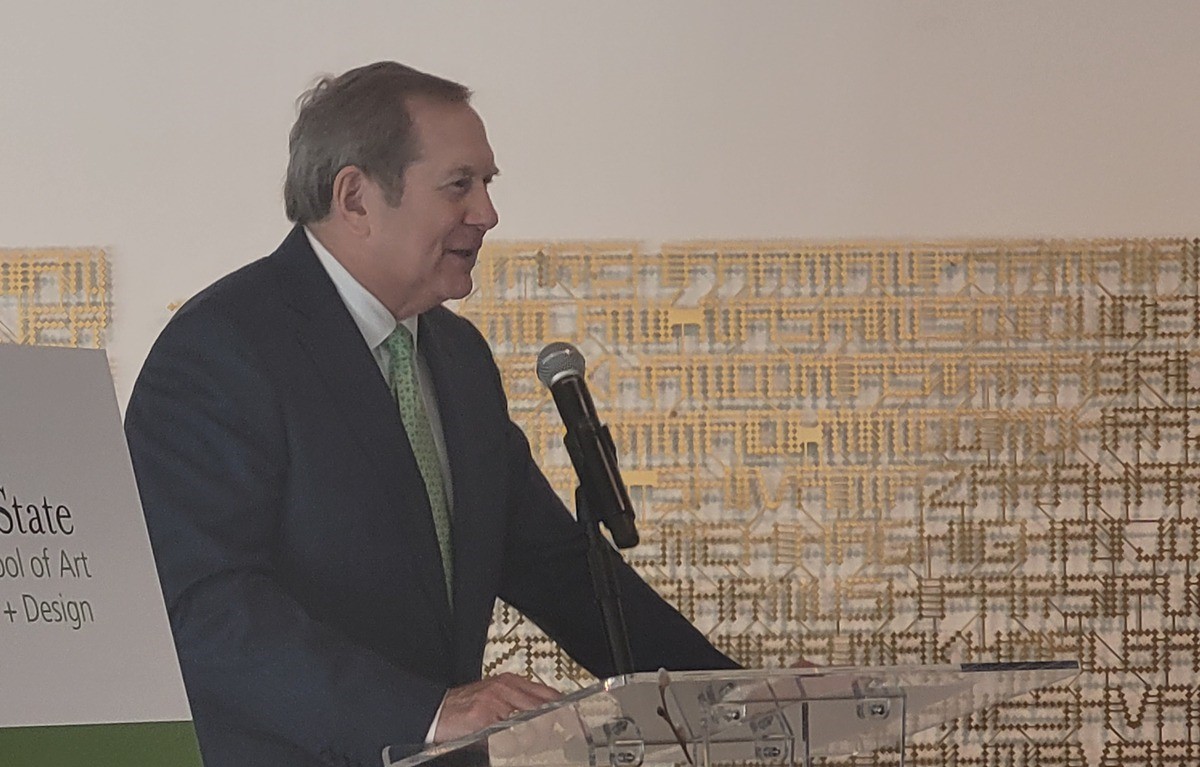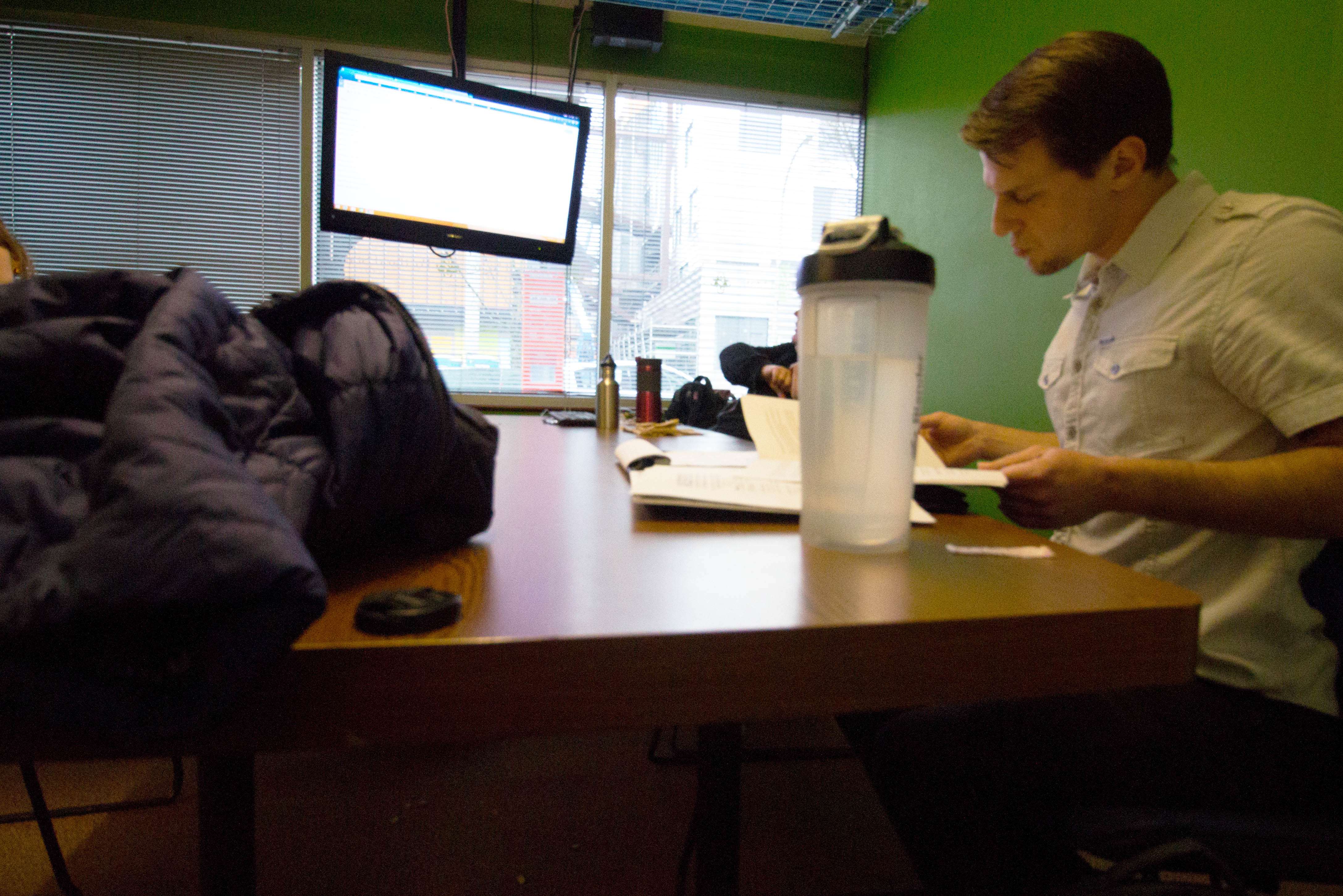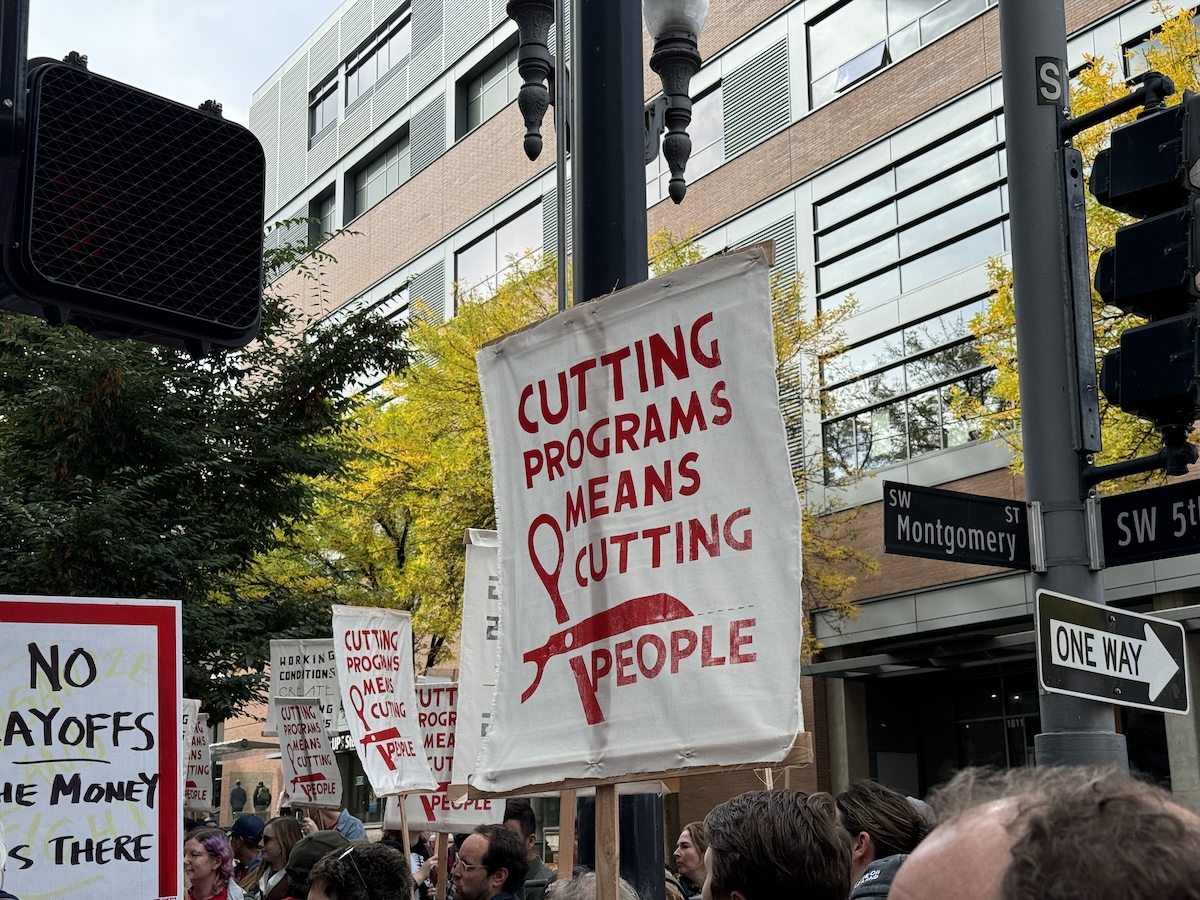A press conference was held at the Jordan Schnitzer Museum of Art at Portland State (JSMA at PSU) on April 2, where PSU announced a $10 million gift from Portland Real Estate Developer and Philanthropist Jordan Schnitzer to the School of Art + Design.
$5 million of the donation will support the construction of a brand new arts building, scheduled to open in 2026 at the southern edge of the park blocks near the Native American Student and Community Center.
Additionally, $4 million of the donation will help continue operations of the JSMA at PSU and ensure free access to Schnitzer’s and the Jordan Schnitzer Family Foundation’s art collections.
The remaining $1 million will provide additional lighting, signage and outdoor art throughout campus.
The art school will be renamed the Schnitzer School of Art + Art History + Design in recognition of Schnitzer’s contribution to PSU.
“The building will allow PSU to enhance student experiences, strengthen and expand key programs and provide maker spaces and galleries to the public, the community and our students,” PSU President Ann Cudd said.
Cudd continued to explain how this donation will help advance PSU’s role as a downtown arts and culture destination and enhance campus spaces in ways which will impact the lives of students, faculty, visitors and the life of Portland itself.
“I am delighted to say that the Schnitzer School of Art + Art History + Design will rank as the largest and most diverse public art school in our region,” Cudd said.
To ensure that everyone feels welcome in this new space, a group of BIPOC student leaders from the schools of art, art history, architecture and design created the Spatial Aspirations Document to guide the building’s design process using a critical race-theory approach.
In the fall of 2022, the BIPOC Student Cohort developed a set of spatial aspirations for inclusion which reflect ideas generated from stories shared by communities who were most impacted by educational inequities. The ideas presented in this document offer an action-oriented guide to design the building in service of racial equity and social justice.
According to Lis Charman—Director of the Schnitzer School—the architects have mapped the spatial aspirations onto the building’s design and will be using it as a guide by incorporating all the recommended elements into the design of the new building.
The cohort that created this guide aimed to create a decolonized space for access to art and community by centering BIPOC and marginalized perspectives at PSU and the Portland metro area. It also aimed to provide innovation and leadership in equity-based approaches to contemporary art practice, elevate and enhance the student experience, provide an anchor for the arts in our community and more.
“Not only will this building allow these incredible teachers, professors and staff to help people follow their dreams of becoming an artist, but the majority of the students in the 1,200-student program here will help learn how to think creatively,” Schnitzer said. “If we think about the job needs of all the companies, they need people who will think outside the box. And what a better education, even if you’re a business major, chemistry, science, biotech or whatever. Take a few art classes so that you can learn how to think a little bit differently.”
Schnitzer has longstanding ties to the PSU community. His grandfather came to Portland from Ukraine in 1905 and lived two blocks away from what is now the PSU campus.
Schnitzer’s grandparents raised seven children, all of whom went to Shattuck Grade School and Lincoln High School, now Shattuck Hall and Lincoln Hall. Schnitzer said this donation was largely motivated by his desire to uphold the legacy of his parents, Harold and Arlene Schnitzer, who were longtime supporters of the arts in Portland and at PSU.
Schnitzer added that education is important in upholding his family’s legacy and creating a stronger community.
“In terms of the family, it was education that made the difference in all their lives,” Schnitzer said. “It is critical. Portland State—I think your figure is like 80% of students are first-time college attendees. And yes, we’ve got challenges funding-wise. Every other state does, too. But for each one of you to get a better job, it creates a basis for a richer and fuller life.”
Governor Tina Kotek, who announced the Portland Central City Task Force last summer with the goal of revitalizing downtown, explained how Schnitzer’s donation will help elevate this city’s future opportunities.
“Anyone who wants Portland to succeed also knows that means the success of Portland State University,” Kotek said. “This is a combination of events that we know will be incredibly important for the future of this city… A commitment to arts education at Portland State will maintain and enhance the university’s status as a downtown arts destination for years to come.”
Mayor Ted Wheeler described Schnitzer’s investment as transformational, a marker of positive change for the community and a prime example of the city’s comeback from the pandemic.
“Portland State University is foundational to this community,” Wheeler said. “It provides educational opportunities, of course. It provides cultural opportunities, like this art gallery and school we’re here to celebrate… It’s also about economics and economic prosperity for this city and for the wider community.”
Both the new Schnitzer School and the already-established JSMA at PSU make education more accessible to everybody, Wheeler explained.
“You don’t even have to be a student,” Schnitzer said. “This is available to anybody in our community. Cities have now transformed, and the assets that we have prior to this transformation are no longer adequate to the future that we’re seeking. You can no longer count on people having to be located in cities. Instead, you have to make people want to be located in cities. And I am a strong proponent of arts, culture, education and commerce being the kinds of things that make people want to be in a thriving city.”
Currently, the Schnitzer School is spread across five buildings on campus. According to the project’s website, the new building will bring students, faculty, industry and the community together for the first time.
“With light-filled studios and classrooms, sufficient space for materials storage and flexible locations for exhibition and collaboration, the center will foster belonging, innovation and success,” the website stated.
Charman explained in an email that the new spaces in the building will provide areas for a wide variety of activities. The building will purportedly have spaces for quiet study and research areas, as well as active, hands-on workspaces for textiles, weaving, video production, printmaking, publication, emerging creative technologies, design, art and social practice, drawing, painting, photography and more.
“This truly is a milestone moment for our school, and one for us to celebrate as a community,” Charman stated.
Additionally, there will be a student-run gallery and work yard among the new, exciting learning environments.
“Jordan Schnitzer and the Schnitzer family have long been invested in our work and in our students,” Charman stated. “They champion the practice and study of art and [d]esign as a powerful means of changing lives and changing the world.”
In an announcement made to the college of the arts, Dean Leroy Bynum said this new building will create an important space for artists to gather and collaborate.
“Together, we are creating an important place for artists, designers, performers and makers from all backgrounds and lived experiences to question, reflect and create,” Bynum said. “Together, we believe in the talents of our faculty and students, in the importance of artistic expression as a means to work for social justice and in the PSU campus as an arts and culture destination for all.”






